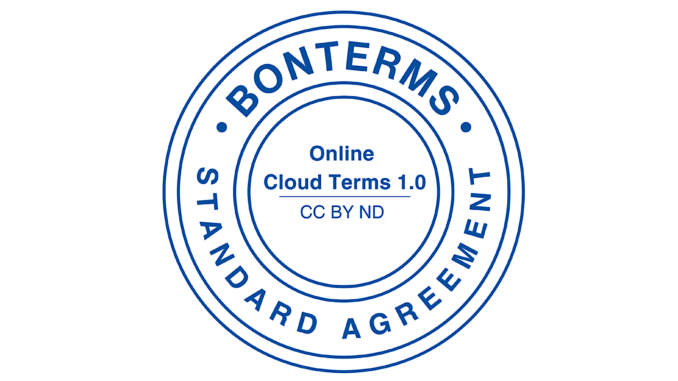
US-based standardisation pioneer Bonterms has launched a set of HTML embeddable model Cloud Terms so that SaaS organisations can easily create standard online Ts & Cs and place them on their website. Artificial Lawyer caught up with CEO, Todd Smithline, to hear more and also explore why workflows matter so much when it comes to improving contracting.
First the Cloud Terms. It may not sound like a big step, but given that there are 100,000s of companies that need such legal certainty displayed on their websites, it’s potentially very impactful. Moreover, this is a standardised set of terms, where Bonterms’ 100-lawyer Standard Agreements Committee has helped to give input that has shaped the language of the document. Smithline is also a very experienced lawyer, having run his own tech-focused law firm in California for many years before starting Bonterms.
‘You could perhaps try and use a Word version of Cloud Terms, but it comes out a mess. So, now we can embed it, as it’s in HTML,’ he said.
‘SaaS companies want their customers to be able to buy directly through a purchase flow on their website or from an order which references a set of online terms. Now they can do all of that with a Bonterms Standard Agreement on their own website,’ he added.
And, as with Bonterms’ standard contracts there will be some variability allowed. But, now onto something bigger: the wider theory behind standardisation.

Workflows and The Bigger Picture
Each individual standard contract type is a small victory for Smithline, but that’s only one part of the story.
As Smithline explained to Artificial Lawyer, this is fundamentally all about getting parties to agree, rather than fight. It’s also about speed, because if you are not fighting over language, which you can now see really is standard, then you can move more rapidly. That in turn allows organisations to safely get on with what they want to do, i.e. run their businesses and make some money.
However, central to this are workflows. Or, as Smithline said: ‘Fast signing is only possible on a platform, plus standards.’
I.e. have a digital channel were parties can instantly come together to get something sorted out between them and have the contract in question standardised to the point that there is little to add other than the parties’ names, some dates, and perhaps one or two specific variations.
‘The future is not redlining,’ Smithline summed up. ‘The future is about simplifying contracts.’
He also noted that while there is a lot of attention on AI, and also for systems such as CLM for inhouse legal teams, the fundamental change that would help corporate lawyers would be getting away from ‘one-sided workflows’.
I.e. one party has loads of tech to help with redlining, it has a bank of its own documents and KM on how it does things, but in the wider world there are perhaps standard contracts that mean they don’t need to redline, they don’t need to drag up X and Y former deals to extract language that it then later turns out is rarely used by anyone else.
The next aspect is to make the meeting of the parties a mutual space, rather than: ‘I have my legal tech and KM space, and you have yours, and we’ll fight it out and see who wins’, with information pinged back and forth by email, creating an ever-widening spiral of redlines, rewordings, arguments and lost time.
As Smithline concludes: ‘The problem with contracting is that people can’t agree.’
Now, he’s no newbie to the concept of different parties wanting different things. He’s spent most of his professional life working on that very area. However, his view is that there have got to be areas of commercial interaction where the legal needs tend more toward mutual agreement rather than disagreement.
Naturally, no-one is expecting a highly standard approach to the central negotiation of a complex, multinational billion Dollar M&A deal. But, there’s plenty of documentation at the intersection of business and law that can be standardised – and it makes sense to do so.
Final word from Artificial Lawyer on standardisation: genAI tech offers us the chance to reshape the productive aspects of the legal world, but workflows and standards are very much part of this legal transformation as well.
If the goal is to remove inefficiency, reduce risk and costs for the clients, and speed up deal velocity, then standards are just as useful and just as powerful as applying what an LLM can do to aspects of a transaction.
In which case, now that Artificial Lawyer is back, this site will continue banging the drum for the wider uptake of standard contracts and the mutual workflow ethos.